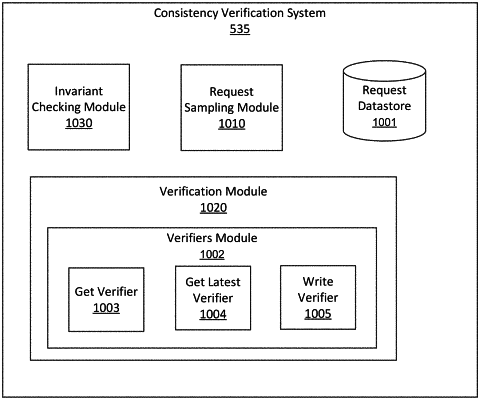| CPC G06F 16/2365 (2019.01) [G06F 16/2272 (2019.01)] | 17 Claims |

|
1. A method for checking data consistency in a distributed key-value pair database, the method comprising:
maintaining a plurality of verifiers for verifying data consistency in the database, wherein each verifier comprises a set of instructions for verifying data consistency for a type of request;
processing, by a content item management system, a plurality of requests, wherein processing each request comprises performing, by the content item management system one or more operations;
selecting a request from the processed plurality of requests, wherein the selected request was processed at a first timestamp, received a first response, and specified a set of one or more parameters;
identifying a verifier from the plurality of verifiers to verify data consistency associated with the selected request; and
verifying, by the identified verifier, data consistency associated with the selected request, the verification comprising:
sending a replay request corresponding to the selected request, the replay request including the set of parameters, wherein the replay request is sent at a second timestamp after the first timestamp, the first timestamp and the second timestamp separated by a predefined holdoff period;
receiving a second response associated with the replay request;
determining whether the second response is consistent with the first response; and
based on a determination that the second response is not consistent with the first response, outputting information describing data inconsistency.
|